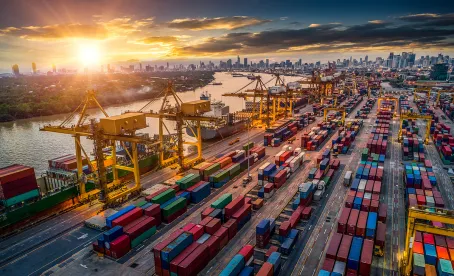Since 2018, the Section 301 “China” tariffs of between 7.5% and 25% have been levied against critical components of the electric vehicle (EV) supply chain sourced from China.
In May 2022, the US Trade Representative (USTR) initiated a statutory and ongoing four-year review of the tariffs to determine which will stay or go, or even if other tariffs should be added.
US legislation and policy continue to prioritize and incentivize domestic sourcing and manufacturing for the EV industry. Nonetheless, it remains to be seen if these incentives will outweigh the cost of the tariffs and current sourcing realities of the supply chain, and whether the current USTR review will lead to the elimination of tariffs on EV-related imports from China.
Section 301 “China Tariffs”
-
Pursuant to findings based on Section 301 of the Trade Act of 1974, USTR imposed additional duties on four lists of Chinese-origin products.
-
Products on Lists 1-3 are subject to an additional 25% tariff, including battery cells, battery storage components, electrical control boards and other inputs for the battery management system (BMS), most automotive parts (e.g., electric motors, transmission, body, axle, suspension, steering assemblies and components), critical minerals (e.g., lithium, cadmium, cobalt, lead, mercury, zirconium, magnesium), and artificial graphite and the raw materials to produce it (e.g., pitch coke).
-
Products on List 4A are subject to an additional 7.5% tariff, including lithium-ion batteries, certain nickel-cadmium storage batteries, and certain used batteries for the recovery of lead (no tariff is currently imposed under List 4B).
-
After a four-year period since the imposition of the tariffs, the Section 301 statute mandates for USTR to review whether the tariffs should continue (Section 301 Four-Year Review).
-
Phase 1 of the Section 301 Four-Year Review concluded on September 2, 2022, receiving a total of 489 comments from the public, which partially or in full supported continuation of the tariffs.
-
Phase 2 of the Section 301 Four-Year Review was announced on October 12, 2022, whereby all interested parties — including parties objecting to the continuation of the tariffs — had an opportunity to comment between November 15, 2022, and January 17, 2023.
What to Know
Based on USTR’s review of the Section 301 Four-Year Review comments received, the USTR has the discretion to modify or eliminate the tariffs on entire product lists or on specific products. Although it remains to be seen how this process will unfold, the following reports on what we know, what we expect, and what remains uncertain:
-
Phase 2 of the Section 301 Four-Year Review received 1,497 comments, the vast majority of which were in favor of removing at least certain tariffs, including those on battery products and inputs, certain critical minerals and chemical compositions, electrical control boards, and various other components incorporated into EVs.
-
Even though the USTR has discretion to remove Section 301 tariffs following review of the Phase 2 comments, we expect the tariffs to remain in effect well into 2023, given that the minimum threshold for continuation was satisfied via the Phase 1 comments.
-
There is no timeline for USTR to conclude its review of the comments, and US Trade Representative Katherine Tai indicated the same when asked about the agency’s timeline with the comments. If previous Section 301 processes were any indication, a development by early summer would be surprising.
-
For goods subject to Section 301 tariffs, there are currently 549 “product exclusions” that exempt specific types of products from the tariff through September 30, 2023, which include certain printed circuit boards and electric motors, among other specific product types or tariff classifications. The currently exempted products may be the front runners for removal from the tariff following the review of the Phase 2 comments. However, no one has a crystal ball on which tariffs will be discontinued at the conclusion of the Section 301 Four-Year Review process.
-
For any goods that remain subject to Section 301 tariffs following the conclusion of the Section 301 Four-Year Review, and though not certain, we would expect that USTR will eventually open up a separate “product exclusion” process to provide relief to the supply chain.
How We Can Help
The sourcing and capacity realities of North American EV supply chains make the Section 301 tariffs essential to the industry’s cost-benefit analysis. Because of the uncertainty as to outcome of the comment review or potential further relief, even the most favorable timeline suggests that the impact from these tariffs is not going away anytime soon. As the EV movement invests to on-shore the North American supply chain, the benefits from the domestic incentives must account for the Section 301 tariffs as part of the calculation.






 />i
/>i

